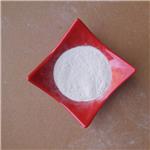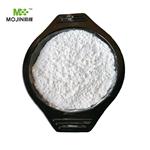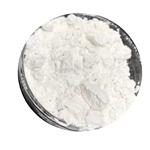Description
Sterculia gum (also called gum Karaya, gum kadaya, Indian tragacanth, and India Gum, and by other names) is the dried exudate
of Sterculia urens, a tree native to the mountainous regions of
central and eastern India. Native collectors tap or drill the trees,
and after several days collect the exudate in the form of large,
irregular tears that may weigh up to several pounds. The best
quality gum is collected during the hot spell (May to June) that
precedes the monsoon. The collectors sell the product to dealers
who clean and fragment the tears and sort the gum before putting
it into export markets. Processors in the United States further
purify the gum to remove bark, wood fiber, and soil, then grind,
size, and blend the material to obtain uniform grades of gum.
Sterculia gum is also produced from various other species of
Sterculia found in India, Africa, Australia, China, and Indochina,
but the product is apparently not available separately in commercial amounts. These other gums may be mixed with that from S.
urens. Another related gum is produced by species of Cochlospermum.
Sterculia gum is a complex polysaccharide with a high molecular
weight of about 9.5 million. The molecule is reported to consist
of units of D-galacturonic acid, D-galactose, and L-rhamnose in
proportions of 43, 13, and 15 percent, respectively. It has a high
acetyl content, with acid numbers reported at between 13.4 and
22.7; on aging or heating, the molecule may split off free acetic
acid which gives Sterculia gum a sightly acetous odor.
Sterculia gum absorbs water rapidly to form viscous mixtures at
low concentrations; up to 4 percent may be hydrated in cold water
to form heavy, viscous pastes. A one percent mixture may have aSterculia gum absorbs water rapidly to form viscous mixtures at
low concentrations; up to 4 percent may be hydrated in cold water
to form heavy, viscous pastes. A one percent mixture may have a
viscosity of 3,330 centipoises. Viscosity decreases with heating
and aging. It is used as an emulsifier and food stabilizer.
A dried, gummy exudation from Sterculia urens Roxburgh and
other species of Sterculia (Fam. Sterculiaceae), or from Cochlospermum gossypium A. P. De Condolle or other species of Cochlospermum Kunth (Fam. Bixaceae). It occurs in tears of variable size
or in broken, irregular pieces having a somewhat crystalline
appearance. It is pale yellow to pinkish brown, translucent, and
horny, and is sometimes admixed with a few darker fragments and
occasional pieces of bark. The gum has a slightly acetous odor
and a mucilaginous and slightly acetous taste. In the powdered
form it is light gray to pinkish gray. Karaya gum is insoluble in
alcohol, but it swells in water to form a gel.
Chemical Properties
Gum karaya is the exudate of Sterculia urens, a tall (30 ft) bushy tree, native to India, where it grows in forests of the
eastern and central mountains. The trees are tapped and the exudate, which may be several pounds in weight, is collected and sold
at auction. Crude gum karaya is cleaned, ground, sized and blended to obtain uniform grades. Impurities range from 0.1 to 3% and
consist primarily of bark, but other foreign matter may be present. The part used is exudate from the bark. The gum has a slight
vinegar smell.
Essential oil composition
Gum karaya is a complex polysaccharide with a very high molecular weight, approximately 9,500,000 daltons. The
gum karaya molecule contains D-rhamnose, D-galactose and D-galacturionic acid units. Ratios of 43% D-galacturionic acid, 13%
D-galactose and 15% L-rhamnose have been obtained by hydrolysis.


